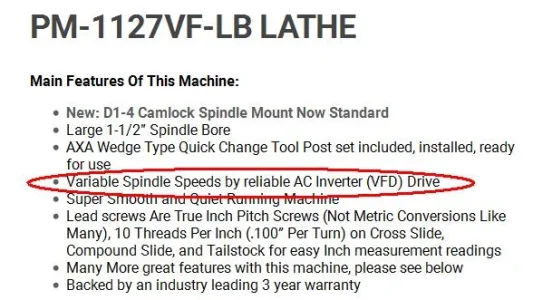Most VFD's have big manuals (100+ pages) that describe all the things they can do, but for the most part they are pretty simple.
There are some analog and digital inputs that can do various things. All of the inputs are low-voltage (typically 10VDC), and very low current so relatively thin wires (i.e. 20-26 AWG is enough) can be used. There are no electrical safety issues with the wires, although you do want to be careful so a loose or damaged wire cannot suddenly turn the lathe on.
What the inputs do is set by the programming of options in the VFD. The digital inputs can signal such things as FWD, REV, JOG, Motor Enable, Brake, etc.
The analog inputs can do things like control the motor speed remotely. The most common use of that is to place a potentiometer on the front of the lathe that controls the frequency sent to the motor. You can program the maximum and minimum frequencies to be sent to the motor. It is common to set the minimum to something like 5Hz, so you can run it very slowly (it will still have almost full torque at that speed), 60Hz for normal operation, and up to as much as 120Hz (often as high as 200Hz is available) to run everything at double speed.
You need to be careful as the motor can over heat at very low speeds since it will produce almost as much heat at slow speeds, but any built-in cooling fan will be blowing almost no air. I solved that by using the relay output that is available on the VFD. I programmed it to turn on whenever power is being applied to the motor. The relay then runs a powerful 24V fan that is directed at the motor.
You need to be careful that the VFD's output frequency / voltage curve is set properly to reduce the voltage applied to the motors as the frequency is decreased as well. The default setting is usually pretty close to what is required.
Running the motor at a frequency higher than its nameplate rating can damage bearings, or in extreme cases make the armature fly apart. Generally 90Hz (150% speed) is not an issue. At any frequency beyond the nameplate rating the motor will start to have less and less torque though.
My VFD is an Alan-Bradley (aka AB). You can program one of the inputs to be JOG. At the same time you can specify what the output frequency should be in JOG mode. It is nice to JOG at low speed, so I think I specified 6Hz. That means it will jog at 1/10 the usual 60Hz speed.
After that it gets a bit more complicated since you may also be able to set a different acceleration profile for the JOG input.
I have my lathe set for about a 3 second acceleration period, so when I press JOG, it takes 3 seconds to go from 0Hz to 6 Hz. That means a half second press will only accelerate to a couple of Hz, and only slowly move the chuck a fraction of a turn. The same accel/decel curve is used when going into forward or reverse mode. You can switch it from full forward to full reverse, and it takes 3 seconds to decel to a stop, and then another 3 seconds to accel to full reverse with no excess loads on anything.
When I apply the foot brake lightly, it applies a normal decal curve (3 secs), but if I press it harder it applies a 0.1 second decel curve so it will very quickly come to a stop (especial
Ideally you would want a relatively fast decelleratio0n curve on JOGging, since you are not turning it very fast, and probably want it to stop quickly.
Some day soon, I will update my lathe rebuild thread with an electrical posting an show what I have done. I haven't updated that thread in over a year.


